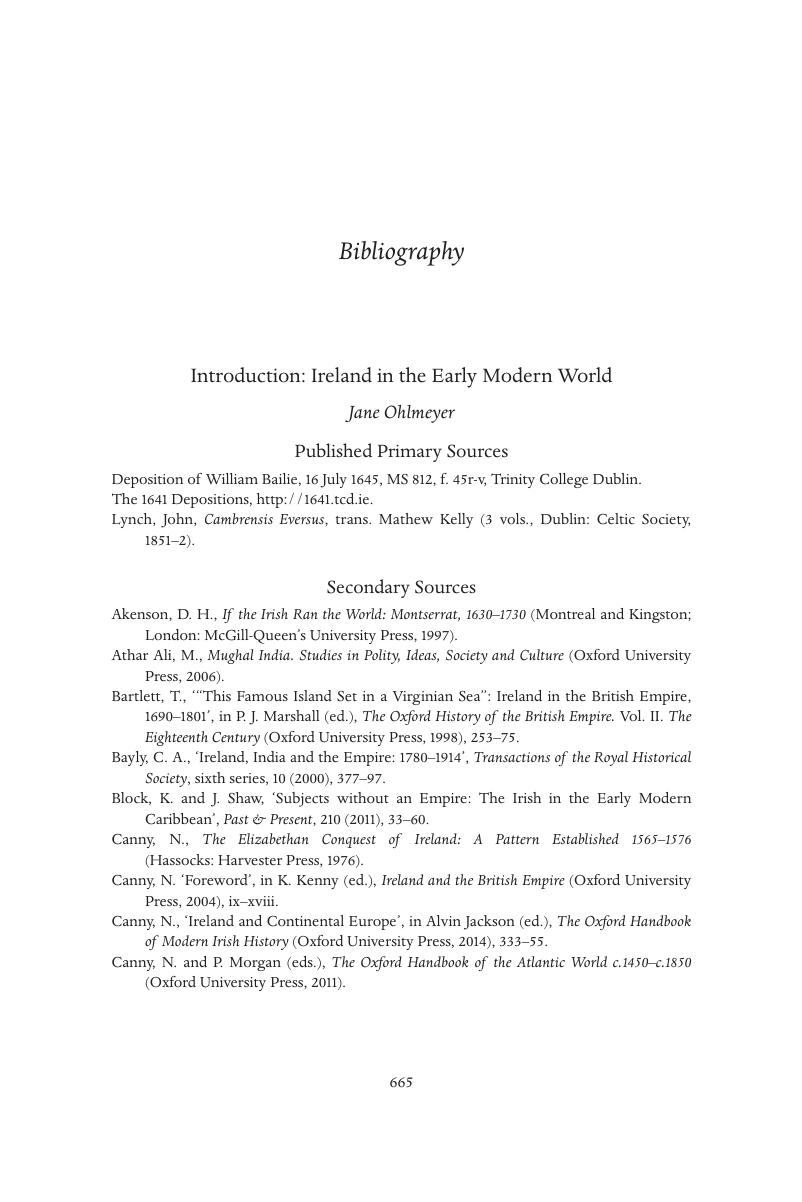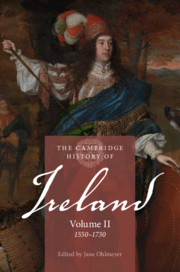Book contents
- The Cambridge History of Ireland
- The Cambridge History of Ireland
- The Cambridge History of Ireland
- Copyright page
- Contents
- Illustrations
- Figures
- Maps
- Contributors
- General Acknowledgements
- Acknowledgements
- Conventions
- General Introduction
- Introduction: Ireland in the Early Modern World
- Part I Politics
- Part II Religion and War
- Part III Society
- Part IV Culture
- Part V Economy and Environment
- Bibliography
- Index
- References
Bibliography
Published online by Cambridge University Press: 17 December 2017
- The Cambridge History of Ireland
- The Cambridge History of Ireland
- The Cambridge History of Ireland
- Copyright page
- Contents
- Illustrations
- Figures
- Maps
- Contributors
- General Acknowledgements
- Acknowledgements
- Conventions
- General Introduction
- Introduction: Ireland in the Early Modern World
- Part I Politics
- Part II Religion and War
- Part III Society
- Part IV Culture
- Part V Economy and Environment
- Bibliography
- Index
- References
Summary

- Type
- Chapter
- Information
- The Cambridge History of Ireland , pp. 665 - 750Publisher: Cambridge University PressPrint publication year: 2018



